READY TO GET STARTED?
REQUEST A FREE ESTIMATE
Fill out the form below or call (888) 466-7849 for a free, no-obligation estimate.
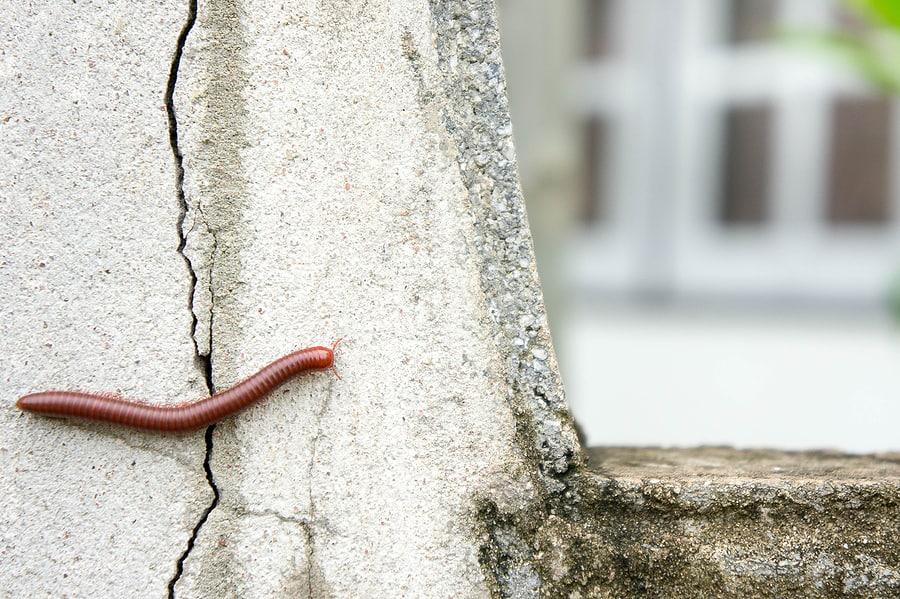
Millipedes (“thousand feet”) are one of the most common pests found after rainstorms. These moisture loving creatures are usually tan or black in color with segmented bodies and dozens of legs. They have small antennae and large mandibles and are often mistaken for centipedes. Because they seek moisture and humid environments, they are most often found outside in your yard where they burrow and hide in small spaces. They can also be found indoors near patio doors, windows, and in basements. If they are found indoors it is usually because they have wandered inside by mistake.
Millipedes will eat plants and small insects. They usually eat decaying matter or plants that are already dead so they are generally harmless to healthy plants; they will, however, eat young seedlings. Millipedes don’t bite, sting, or transmit diseases to humans. They are considered by many to be beneficial to have around as they eat decaying matter and help control populations of smaller insects.
If you do feel the need to keep millipedes out of your home, there are several natural options you can try for both repelling and eliminating these pests. Here are a few of our favorites:
DIY millipede traps are pretty easy to make plus you don’t have to be there to check it! Put the piece of fruit inside the bottle so that it sits in the bottom. Grab a piece of vinyl tubing (about 6 inches in length), a plastic soda bottle, some caulk or tape, and a piece of ripe fruit. Try to get a piece of tubing that just fits snugly into the lip of the bottle. Slide the tubing into the bottle so that about 2 inches of tube is inside and seal it with the caulk or tape. Lean the bottle on its side, making sure that the tube doesn’t touch the edges of the bottle. Millipedes will crawl into the tube to get to the fruit as it starts to rot and not be able to crawl back out. You can place several of these traps anywhere you see millipede activity.
One of the easiest and quickest ways to get rid of millipedes is to manually remove them. Try not to just squish them with your foot as they will give off a foul odor similar to stinkbugs. You can use a broom and dustpan to sweep them up and dump them in a bucket of soapy water to kill them; or you can just vacuum them up with a vacuum cleaner or shop vac and dispose of them outside.
Diatomaceous earth is a crystalline powder substance that can be used for a variety of pests. The crystals in this natural product pierce the hard exoskeletons of pests, causing micropunctures all over their bodies. This then dehydrates and slowly kills the pests over time. DE can be sprinkled around room perimeters, under appliances, under door gaps, on sliding glass doors, around foundations, in houseplant soil, and under fences. DE is safe to use by and around humans.
Boric acid is similar to DE. It also cuts up the pests as they crawl across it, causing them to slowly dehydrate. It also upsets the digestive system of millipedes, causing it to work faster than diatomaceous earth. Boric acid should not be used in areas with kids or pets.
Essential oils are more effective as repellents rather than insecticides. Tea tree oil and peppermint oil are the two most common for use against millipedes. Essential oils should always be diluted with water before use. Apply the oil mixture around entry points like windowsills, door gaps, basements, vents, foundation cracks, and crawlspaces. You can also apply them outdoors in any areas millipedes may be, as long as it is shielded from rain.
Like essential oils, cayenne pepper works best as a repellent rather than an insecticide. Cayenne pepper also works for other pests besides millipedes. You can buy whole cayenne peppers and grind them yourself or buy the powder. Sprinkle the pepper in any areas where millipede activity is spotted. You can also sprinkle it around foundations and entry points to your home.
Like any pest, prevention is key to heading off infestations before they get out of hand. While the above methods are great for existing millipede problems, keeping them out of your house in the first place is the most natural remedy of all. Try these millipede prevention tips to help keep millipedes away.
Millipedes are attracted to moisture so keeping your home dry will help make it less attractive to them. In kitchens and bathrooms, wipe up any excess moisture from handwashing, dishes, etc with a towel. Use less water when possible and don’t turn faucets on full blast. Seal or cap any containers with liquid in them. Try to wash dishes all at once instead of throughout the day. In basements and garages, wipe up any excess moisture that accumulates. Try to clean up water spills immediately. Dry cars, boats, tools, and equipment outside. Store any wet equipment outdoors. Use a dehumidifier if necessary. Outside, clear out any clogged gutters or install gutter guards. Keep water away from your foundations. Fix any damaged drains, sloping tiles, and unlevel ground. Repair sprinkler systems. Practice good pool maintenance. Avoid overwatering your lawn and try to water early in the morning so the moisture has time to dry out before nightfall. Adjust your sprinklers to prevent pooling.
Remove any mulch, leaves, grass, hedge clippings, boards, firewood, boxes, stones, etc. from around foundations. If you can’t remove them, try to elevate them. Keep grass mowed and plants pruned. Don’t overfertilize your lawn. Secure your trash and compost. Keep your floors clean and dry (this eliminates both food and water sources for millipedes). Caulk any cracks or crevices in foundations and around wiring and plumbing. Make sure weatherstripping and thresholds are in good repair and fit tightly. Caulk around doors and windows and expansion joints where sidewalks, patios, sunrooms, etc. are next to foundations.
While millipedes aren’t harmful (and are even considered beneficial by some), they can be a nuisance if you find them in your home. If you have an issue with millipedes or any other pest, contact your local pest control company for a free evaluation and appropriate treatment plan.
What’s Attracting These Roaches?!
Protect Your Vehicle From Lovebugs
What’s Attracting Birds into My House?
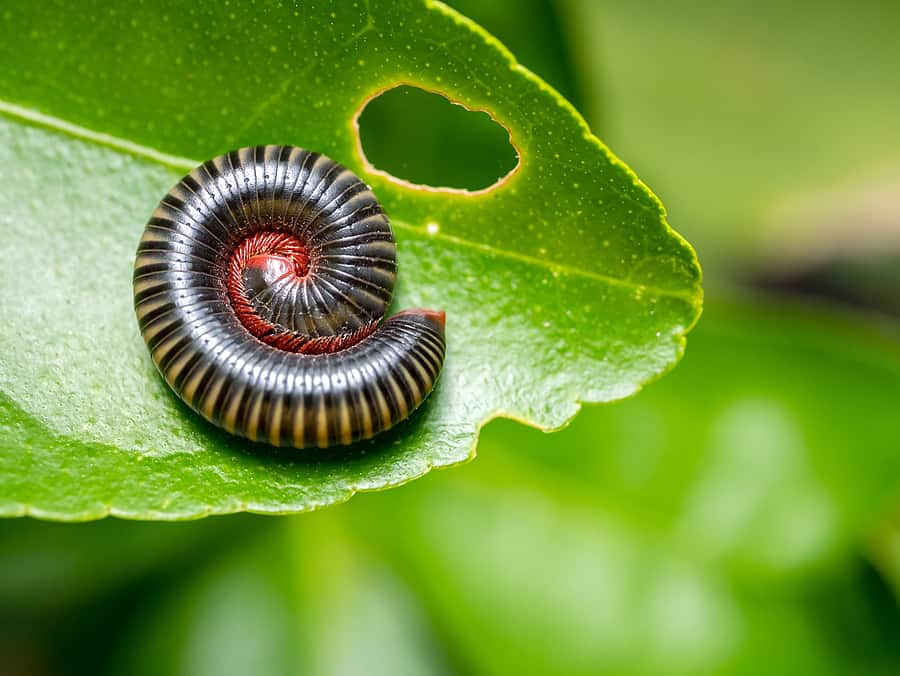
Millipedes are common occasional pests that are found throughout the United States. While they typically live outdoors under leaves, mulch, compost, rocks, etc, they will come indoors for two reasons: in search of water during droughts or in search of shelter after heavy rains. They are often found infesting basements, garages, and crawlspaces. If you spot millipedes in your house, it is highly likely that they are breeding somewhere in your lawn.
Millipedes are decomposers meaning their diet primarily consists of damp, decaying plant material. Because of this, they are quite beneficial to have in your garden. While they are harmless to humans, millipedes can become a nuisance if they infest your home in large numbers. Prevention is the best method of millipede control. Here are some tips you need to know about how to keep millipedes away from your home.
If there is nowhere for millipedes to hide or breed then they can’t infest your home. Prevent millipedes by removing mulch, leaves, grass clippings, boards, woodpiles, rocks, boxes, etc. from your yard, especially if they are near foundations. If you are unable to remove them completely, try to elevate them off the ground. Try not to overmulch your flowerbeds.
What attracts millipedes is moisture, especially in crawlspaces and around foundations. Make sure your gutters are clear and properly functioning. Consider installing gutter guards to help prevent clogs. Make sure downspouts are pointed away from foundations and use splash blocks to keep water away from foundation walls. Consider installing tiles or drains or sloping the ground so water drains away from foundations. Repair any leaky pipes, appliances, or faucets. Reduce the humidity in your crawlspace and basement with dehumidifiers, sump pumps, or soil covers.
Millipedes thrive in the moist layer of thatch that can accumulate on unkempt lawns. Keep your grass mowed short and dethatch the lawn as this will make it less appealing to millipedes. Try not to overwater your lawn. Don’t water your lawn at night as there is no sun to help evaporate the moisture.
Millipedes can enter your home through cracks in the exterior of your home or foundation. Seal any cracks or openings in the outside foundation. Use thresholds or door sweeps on all exterior doors. Caulk the outer edges of the thresholds. Seal any expansion joints where sunrooms, patios, and sidewalks are next to foundations. Seal any expansion joints or gaps at the bottom of basement walls.
Millipedes can only survive for a few days once they get inside your home. The conditions indoors are too dry for them to be able to live long periods of time. The infestation will be short lived and eventually they will die off. Once this happens, you can sweep them up with a broom or vacuum them up.
While millipedes don’t cause damage to homes or to the health of humans, they can become quite a nuisance when they invade in large numbers. If you have a problem with millipedes or any other pests, contact a professional pest control company who can provide you with the most up-to-date prevention and treatment techniques.
Watch out for the Stinging Pests!
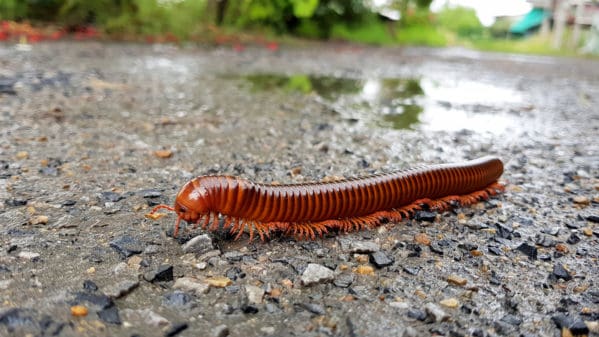
Millipedes are arthropods (not insects) that are commonly found in damp, moist locations. They feed on decaying organic matter. Millipedes will usually hide during the day and come out at night when the humidity is higher and dew is present on the ground. Millipedes are often mistaken for centipedes – they have elongated, worm-like bodies with 2 pairs of legs on each segment of their bodies. They are usually about 1 inch long with a hard, round, cylindrical body that is brown to black in color. When they are disturbed or dead they will curl into a spiral.
Finding a millipede in the house is not common. They cannot reproduce indoors and usually only come inside when there is a period of extreme wetness (during the rainy season) or in search of somewhere to overwinter (usually in late Fall). Millipedes are most commonly found in gardens but when they do come indoors they are usually found in the garage, basement, or the lowest level of the home. Millipedes that wander indoors typically die in a short amount of time because of the dryness.
If a millipede does get into your home, are they helpful or harmful? Should you be concerned? Millipedes are NOT harmful to humans. They do not feed on buildings, structures, or furnishings. They also cannot bite or sting. In fact, they can be beneficial in your compost pile as they help to break down the contents. They can cause damage to your garden by destroying seedlings or feeding on vegetables; however, there is no need to eliminate them unless they are causing damage to your plants.
While a millipede infestation is rare, there are things you can do to help prevent these pests from getting into your garden or home. Here are some tips on how to get rid of millipedes:
Take the Homework, Leave the Lice
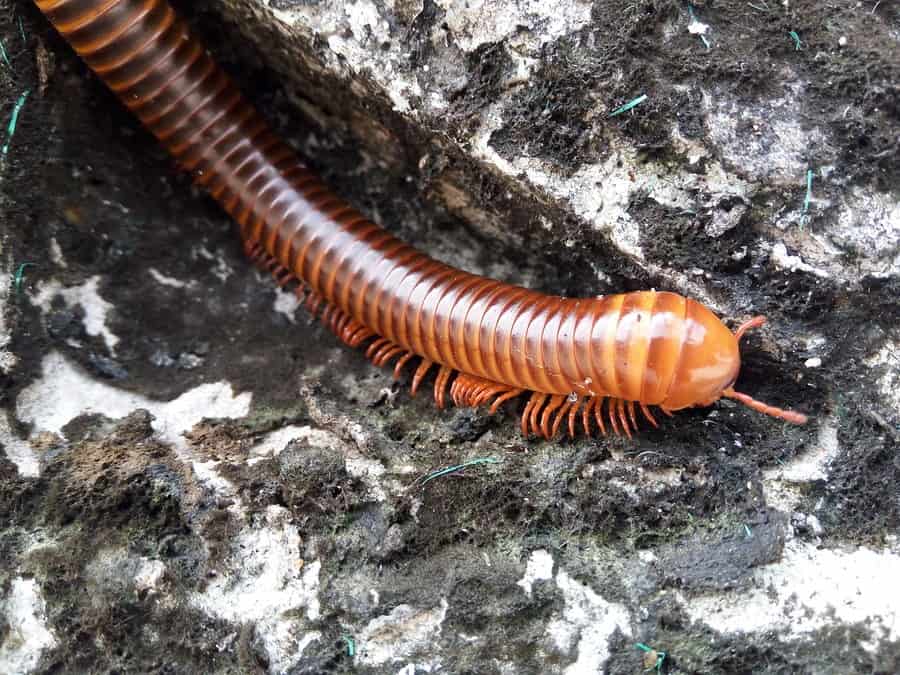
Millipedes, also known as “thousand leggers,” are arthropods that often make their way into our homes. Millipedes range from 2.5 to 4 cm long, are brownish in color, are long and slender, and look a lot like worms with legs. They are segmented with 2 pairs of legs per segment. Millipedes are nocturnal and tend to move in large numbers. They are also scavengers, feeding on decaying plant material in and around your home. While they are definitely creepy looking, they don’t bite or cause any damage to your home or food supplies.
Millipedes are often found outdoors in damp places such as mulch, flowerbeds, under leaves, compost, rotting wood, and under stones in your yard. They are also commonly found around foundations. Excess rain, drought, and cooler temperatures can make their outdoor habitats less favorable for them and you will often see millipedes in the house during these conditions. Excess rain will drive them indoors in search of shelter and drought will drive them indoors in search of water. Once in your home, they tend to gravitate toward damp areas such as laundry rooms, basements, and crawlspaces. Millipedes will usually die fairly quickly once they get inside due to the lack of moisture. If you’re wondering how to get rid of millipedes indoors, you can simply remove them with a vacuum cleaner or shop-vac.
How can you prevent a millipede infestation from taking over your home? Here are a few tips to prevent millipedes in the house.
What to Expect When Signing Up for Termite Protection
Lawn Care: What’s Causing Yellow Spots on Your Lawn & How to Fix It
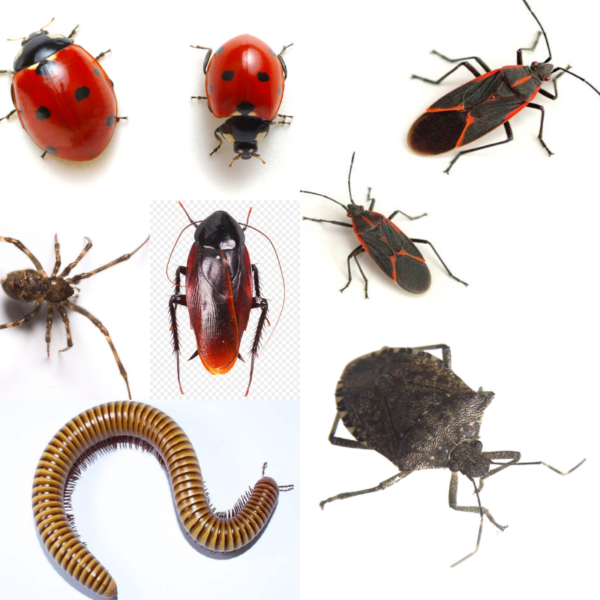
Ladybugs are said to be a sign of good luck, but when you start to find them crawling all over the inside of your home, you don’t feel as lucky.
Ladybugs, or Asian Lady Beetles, are just one of the pests that will try to use your home for overwintering. Overwintering is the process of insects passing the winter season, and your home poses as the ideal habitat for this practice.
Temperatures drop, and pests such as house spiders, boxelder bugs, ladybugs, millipedes, stink bugs, and even smokybrown roaches, will make their way in your home to hide during the cold weather. Come spring, these pests will emerge in and around your home in MASSIVE numbers.
The best preventive measures to stop overwintering pests, luckily enough, are DIY!
If you feel you have an issue with any of these overwintering pests, call you licensed pest professional to schedule an inspection right away.